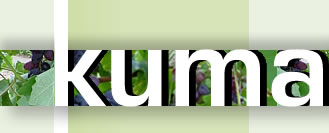What is an Antioxidant?
An antioxidant is any substance that can donate an electron to free radicals and itself remains more stable and therefore less harmful than the radicals it reduces. All aerobic organisms necessarily possess an antioxidant defense system to protect themselves against oxidative injuries. In humans, this includes enzymes present within cells (super-oxide dismutase, catalase and glutathione) and uric acid and indirect bilirubin circulating in the blood. In healthy individuals the production of ROS is balanced with antioxidant defense system. Oxidative stress is a disturbance in the balance in favor of the ROS.
Plants are a good source of antioxidants for supplementing antioxidant capabilities in animals. Over 20,000 combinations of antioxidant are now discovered and the number is increasing. This is not surprising because the oxidative damages for plants stem from sunlight and any plant that grows under the sun must be provided with a defense system to protect itself against sun-derived oxidative damages. The problem this defense is designed to tackle is too much sun energy flooding its light processing system.
Plants are equipped with a good sunlight harvesting mechanism ensuring sufficient supplies of energies for their photosynthesis. Light capturing antennas called chlorophills are extensively deployed in the leaves of the plants. This efficiency in light harvesting turns against the interest of the plants when there is too much of sunlight.
The energy contained in sunlight is used by a plant to extract electrons from water and then to get these electrons lifted to high enough energy levels so they can flow downhill the electron transfer chains contributing to the proton gradient that is linked to ATP synthesis, in much the same way as in mitochondria.
When the electron transfer chains become flooded with unwanted electrons, increasing the chance of free radical formation, chroloplasts, the site of photosynthesis in plants, release the electrons (energy) as heat (infrared light). This incidentally is the mechanism of action of sunscreens used by humans. Under extreme conditions of continuous excessive light, plants suspend growth and photosynthesis, and dissipate virtually all of the light they absorb.
Antioxidants found in the plant kingdom are produced by a plant as a backup to this defense against excessive sunlight. An overproduction of ROS leads to a degradation of photosynthetic proteins and can even trigger programmed cell death (apoptosis).
This author accidentally witnessed an example of how plants are responsive to sunlight. When a plant was moved from by a regular glass window to by an ultraviolet-cutting glass window, the flowers this plant produced were white instead of usual lavender in color. Thus the lavender flowers were a manifestation of the plant's antioxidant defense against ultraviolet sunlight. The antioxidant of lavender color, incidentally, is anthocyanidins of which proanthocyanidins are precursor.
Antioxidants are found in all parts of a plant but are highest in concentration in the sun-exposed surfaces of each part for an obvious reason.
Copyright 2006 Kuma.us
